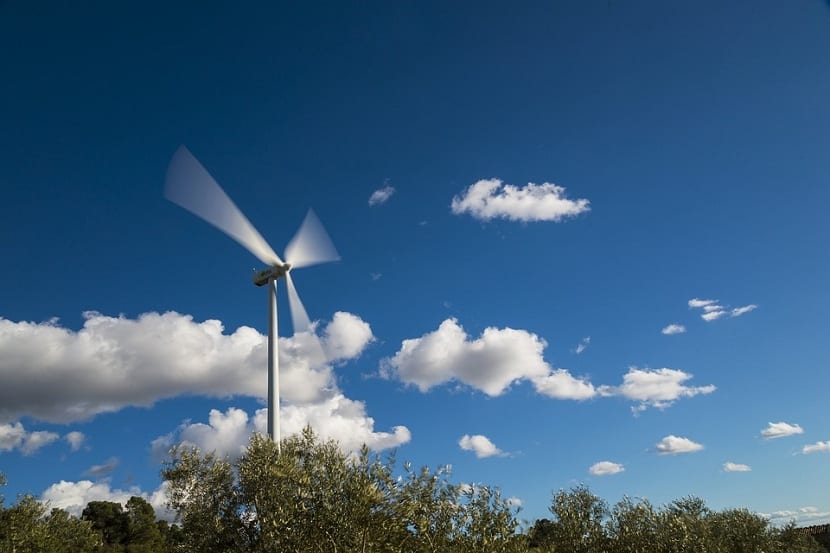
In previous articles we thoroughly analyzed kinetic energy and everything related to it. In this case, we continue with the training and go on to study mechanical energy. This type of energy is what is produced by the work of a body. It can be transferred between other bodies. It could be said that it is the sum of the kinetic energy produced by the movement of bodies, with the elastic and / or gravitational potential energy. This energy is produced through the interaction of bodies in relation to the position that each one has.
In this post you will learn everything related to mechanical energy, from how it works to how to calculate it and its utilities. Would you like to learn about it? Keep reading 🙂
Explanation of mechanical energy

To make it easy to understand, let's take an example. Let's think of an object that is thrown from a distance from the ground. That object will carry a previous kinetic energy because it is moving. As it advances, it acquires a speed and gravitational potential energy when it is elevated above the ground level. Let's take the throwing of a ball as an example.
Taking into account that our arm exerts work on the ball, it transfers the kinetic energy to it so that it can move. In this example we are going to consider negligible friction force with air Or else it would make calculations and learning the concept very difficult. When the ball has been thrown and is in the air, it carries the kinetic energy that drives it to move and the gravitational potential energy that draws it to the ground because it is elevated.
It must always be borne in mind that we are subjected to the force of gravity. Earth's gravity pushes us towards the ground with an acceleration of 9,8 meters per second squared. Both forces that are interacting with the ball have different speed, acceleration, and direction. Therefore, mechanical energy is the resultant of both energies.
The unit of measurement of mechanical energy, according to the International System, is the joule.
Formula

For physicists, calculating mechanical energy translates into the sum of kinetic energy and gravitational potential. This is expressed by the formula:
Em = Ec + Ep
Where Em is mechanical energy, Ec is kinetic and Ep is potential. We saw the kinetic energy formula in another post. When we talk about gravitational potential energy, we are talking about the result of mass times height and gravity. The multiplication of these units shows us the potential energy of an object.
Principle of conservation of energy

Teachers have always insisted over and over again that energy is neither created nor destroyed, but transformed. This brings us to the principle of conservation of energy.
When mechanical energy comes from an isolated system (one in which there is no friction) based on conservative forces (which conserves the mechanical energy of the system) its resultant will remain constant. In another situation, the energy of the body will be constant as long as the change occurs only in the energy mode and not in its value. That is, if energy is transformed from kinetic to potential or to mechanical.
For example, if we throw the ball vertically it will have all the kinetic and potential energy at the moment of ascent. However, when it reaches its highest point, being stopped without displacement, it will only have the gravitational potential energy. In this case, energy is conserved, but in potential mode.
This deduction can be expressed mathematically with the equation:
Em = Ec + Ep = constant
Examples of exercises

To offer you a better teaching of this type of energy, we are going to put a few examples of exercises and we will solve them step by step. In these questions we will involve the different types of energy that we have seen so far.
- Check the wrong option:
- a) Kinetic energy is the energy that a body possesses, because it is in motion.
- b) It can be said that gravitational potential energy is the energy that a body possesses because it is located at a certain height above the earth's surface.
- c) The total mechanical energy of a body is common, even with the appearance of friction.
- d) The total energy of the universe is constant, and can be transformed from one form to another; however, it cannot be created or destroyed.
- e) When a body has kinetic energy, it is capable of doing work.
In this case, the wrong option is the last one. The work is not done by the object that has the kinetic energyBut the body that has given you that energy. Let's go back to the ball example. By throwing it into the air, we are the ones who do the work to give it the kinetic energy to move.
- Let us say that a bus with a mass m travels along a mountain road and descends by a height h. The bus driver keeps the brakes on to avoid crashing downhill. This keeps the speed of the bus constant even when the bus is descending. Considering these conditions, indicate if it is true or false:
- The variation of the kinetic energy of the car is zero.
- The mechanical energy of the bus-Earth system is conserved, since the speed of the bus is constant.
- The total energy of the bus-Earth system is conserved, although part of the mechanical energy is transformed into internal energy.
The answer to this exercise is V, F, V. That is, the first option is true. If we go to the formula for kinetic energy we can see that if the speed is constant, the kinetic energy remains constant. Mechanical energy is not conserved, since the gravitational potential continues to vary when descending from heights. The last one is true, since the internal energy of the vehicle grows to keep the body moving.
I hope that with these examples you can learn better about mechanical energy and pass the physical exams that cost so much to many people 😛